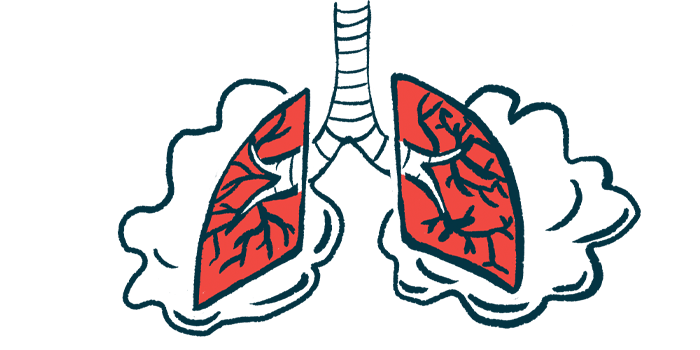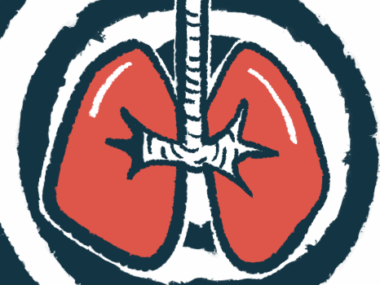Antibiotic Switch Not Seen to Improve Lung Function After Flare
Written by |

When an initial antibiotic failed to improve lung function with a pulmonary exacerbation, switching antibiotics did not lead to greater gains among adults or children with cystic fibrosis (CF), a study found.
“It appears clear that regardless of antibiotic choice, there is a subset of patients who will be slow or poor responders,” the researchers wrote. “Ongoing research is needed to determine factors leading to poor [pulmonary exacerbation] response and treatment strategies aimed at improving response.”
The study,”The effect of antibiotic changes during treatment of cystic fibrosis pulmonary exacerbations,” was published in the Journal of Cystic Fibrosis.
Pulmonary exacerbations in CF patients, acute episodes of worsening respiratory symptoms, are often caused by bacterial infections. Such exacerbations, or flares, also lead to declines in lung function that may or may not recover with treatment.
Usually, after a test of which microbes are responsible, patients are treated with antibiotics to kill off the pathogen. In individuals who don’t respond to a first antibiotic, healthcare providers may switch treatments, but whether this change helps to restore lung health is not well-established.
Researchers in Toronto investigated healthcare providers’ reasons for initiating antibiotic switches while treating a pulmonary exacerbation, and the subsequent effects of the switch on lung function in adult and pediatric CF patients seen at two Toronto hospitals from 2009 through 2015.
Lung function was determined by forced expiratory volume in one second (FEV1), a test of how much air can be quickly and forcibly exhaled.
They examined a total of 399 pulmonary exacerbations, defined as an increase in respiratory symptoms treated with intravenous antibiotics, among 176 patients. In 105 of these cases (74 people), an antibiotic change occurred, usually within one to two weeks after starting therapy.
Switches included antibiotic additions, subtractions, substitutions, or regimen changes.
Common reasons for such switches included a change in antibiotic administration for discharge patients (i.e., switching to oral medication, 27%), drug reactions (20%), and targeting additional microbes (16%).
In another 39 cases, a switch was made because the exacerbation failed to respond to initial treatment, as evidenced by a lack of symptom improvement (12%) or by FEV1 values not returning to at least 90% of what they were prior to the flare (25%).
In children, a switch due to a poor lung function response occurred more often (45%) than in adults (14%).
Researchers then assessed whether the switch benefitted lung function in these 39 non-responders by comparing them with 87 non-responders who did not change their antibiotic treatment.
Most clinical features did not differ between the switch and no-switch groups.
Baseline lung function, or that prior to a pulmonary exacerbation, was poorer among those given an antibiotic switch than those who were not. But lung function was similar among patients in both groups at the time a first treatment was initiated.
Overall, those in the switch group saw significantly smaller absolute improvements in FEV1 by the end of treatment, even after switching antibiotics, than those in the no-switch group.
In a final statistical analysis, the researchers determined that an antibiotic switch did not have a significant positive or negative influence on lung function at the end of treatment or at a follow-up about three months later.
The proportion of patients whose FEV1 values returned to at least 90% of baseline values also was not significantly different between those who switched antibiotics and those who did not.
“In both adult and pediatric PEx [pulmonary exacerbations], we did not observe any clinical benefit in changing antibiotics in patients with poor initial clinical response as measured by FEV 1 response and return to baseline lung function,” the researchers wrote.
They also noted that “female sex was associated with a decreased relative FEV 1 response at end of treatment and adults with CF had a higher relative FEV 1 response compared to children with CF at the first follow-up visit.”
However, given the lower baseline FEV1 values among patients who switched antibiotics, findings imply “these individuals may have more substantial lung damage which may affect their treatment response,” the researchers added. Gains in lung health noted with an initial treatment in some patients may be slower to arrive for others, which in turn influences the response of healthcare providers.
It’s also possible that in some cases, the wrong bacteria is being targeted for treatment, or that the cause of the pulmonary exacerbation was not infectious in origin, the researchers suggested.
“In addition to antimicrobial treatment [antibiotics], nonantimicrobial therapies including airway clearance therapies and optimization of nutritional status are also vital during [pulmonary exacerbation] presentations,” the team wrote.







